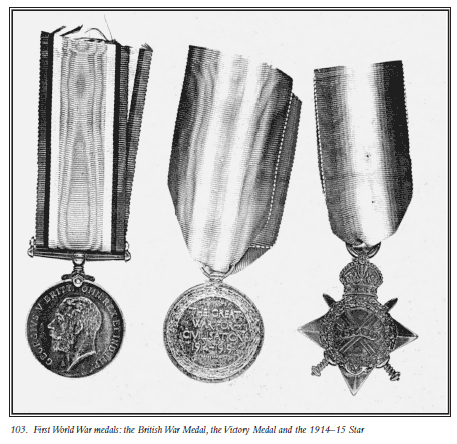This chapter reviews the records of the army, the militia, the Royal Marines, colonial troops and the Royal Air Force. Chapter 21 reviews the records of the Royal Navy and the merchant navy. Ancestors who served in the armed forces may be difficult to find in the sources already described. A military ancestor may rarely appear at home in census returns. His marriage (and his children’s births) could have taken place anywhere in Britain (or its empire).
Deaths can also be difficult to find, since a soldier or sailor may have died on service abroad or at sea (or perhaps in port or army barracks in Britain but far from his home). Even if you locate an ancestor in census, civil registration or parish records, you may have little information about his military service.
The Army
Before the English Civil War, England and Wales had no standing army but troops were raised as required for particular wars. Soldiers were organised in infantry regiments (divided into battalions and companies) and cavalry regiments (divided into squadrons). The artillery was divided into batteries. Units on active service were formed into brigades, divisions, corps or armies. After the union of 1707, the British army also included Scottish regiments and, in the 18th and 19th centuries, many colonial regiments. Soldiers’ names first appear in records of the English Civil War, but only a few documents survive. The names of some officers (and a few soldiers) are contained in muster rolls.
More records are available from about 1660 but it is only from the early 18th century that substantial records survive. Infantry and cavalry regiments were originally named after their commanding officer but by the 18th century they had a number and description, such as the 23rd Foot (the Royal Welch Fusiliers) and the 4th Dragoons. The cavalry consisted of regiments of Hussars, Dragoons, Dragoon Guards and Lancers as well as the Life Guards and Royal Horse Guards. The infantry consisted of regiments of Foot Guards (five of them by 1915) and about 100 other regiments. There was a major reorganisation in 1881 when many regiments were merged and most became linked to a county (although many already had county names). For example the 48th and 58th Foot were merged to form the Northamptonshire Regiment. In addition, the regular army included the Royal Artillery (founded in 1716), the Royal Horse Artillery (founded in 1793), the Royal Engineers and a number of other service corps. Furthermore, militia forces had existed since Saxon times and there were many volunteer units. An ancestor may also have served in the army of the East India Company, in the Indian army, or in colonial regiments.
Medals
Medals were instituted in the early 19th century for officers and other ranks, although senior officers sometimes received decorations at earlier dates for particular battles. There were three types of medal: for campaigns (or particular battles), for good conduct (or long service) and for gallantry. An ancestor’s medals may have been lost (or sold by a soldier or his family many years ago) but many medals can be found in specialist shops or markets. The 1914–1915 Star awarded to Private T. Cooke of the Worcestershire Regiment and the British War and Victory medals awarded to Private L. Cheeseman of the 16th Battalion of the Royal Fusiliers are shown in illustration 103. The men’s names, regiments and numbers are inscribed on the medal rims.

The Navy
Officers are easily located in published lists and biographical dictionaries. These identify the ships on which they served. However, a rating who served before 1853 is difficult to trace unless you know the name of a ship on which he served. Census indexes, civil registration records or parish registers may assist. For example, the parish registers of ports (and the Fleet registers) include many sailors’ marriages and the man’s ship is sometimes recorded.
Officers might be commissioned officers (such as admirals, commodores, captains, lieutenants and commanders) or warrant officers, who headed specialised branches of a ship’s company (including the master, surgeon, boatswain, carpenter, gunner, purser and engineer). Many warrant officer ranks were upgraded in the 19th century to commissioned officer rank. You should commence research of officers in published sources.
You should then refer to the navy lists which were first published in 1782 and superseded in 1814 by the annual official Navy List. A few other official and unofficial lists of naval officers were also published between 1700 and 1782. Each Navy List contains lists of officers (either alphabetically or by seniority but usually indexed) and most of them provide cross references (for each officer) to separate entries for each ship, listing the names and ranks of the officers on that ship. The lists include all commissioned officers but also many warrant officers, such as surgeons, pursers and (in later lists) mates, boatswains, chief engineers and midshipmen.
